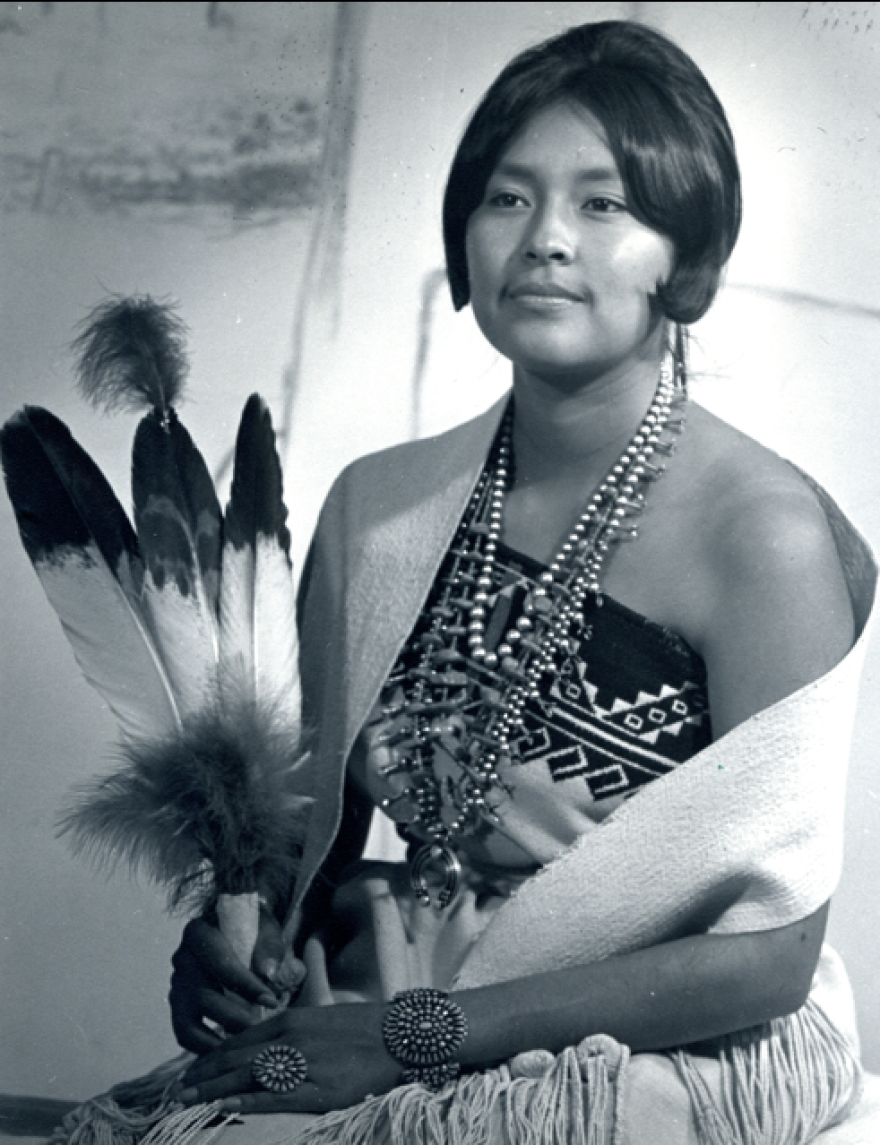The Sheridan WYO Rodeo in will host the return of some special guests this year. The Miss Indian America pageant was held during the rodeo from 1953 until 1984 and several past winners will reunite this weekend.
ARCHIVAL TAPE: [Drumming] There’s a town out west where the eye can stretch over the plains from mesa to mountains, where the heart warms in the sunshine of friends and the townspeople can see buffalo from their own backyards. Such a place is Sheridan Wyoming!
IRINA ZHOROV: However in the 1950s Sheridan historian Gregory Nickerson says Sheridan was not unlike the Jim Crow-era South, but with Native Americans.
GREGORY NICKERSON: There were these signs in Sheridan’s downtown businesses that said things like ‘No Indians or dogs allowed’ and the folks from the Crow Indian Reservation would come down and try and shop at these businesses and would be forced out of the business.
ZHOROV: A group of civic minded residents looked for ways to change things in town. They came up with the Miss Indian America pageant. …They documented the birth of the pageant on a record cut in 1966.
ARCHIVAL TAPE: [singing] Miss Indian America, in turquoise beads and blue……
ZHOROV: Nickerson says from the beginning the focus was slightly different than, say, in the Miss America pageant, on which it was based.
NICKERSON: It was more about selecting someone who would have the ability to be a good public relations person. There wasn’t like a swimsuit section of the Miss Indian America pageant.
ARCHIVAL TAPE: Miss Indian America must first of all be dedicated to a cultural wellbeing of her tribe, she must have a comprehensive knowledge of her people and be dedicated to their advancement. She must have the appearance, personality, and poise to represent her people in the white community.
ZHOROV: The winners spent one year in Sheridan and travelled around the U.S. and sometimes Europe speaking about their respective tribes and Native American issues.

Wahleah Lujan is Miss Indian America 1966.
She says she was an extremely shy girl then. Here she is speaking after being crowned.
ARCHIVAL TAPE, WAHLEAH LUJAN: I am so happy I don’t know what to say, this is such a great honor to be elected Miss Indian America. I will try to be worthy of the title.
ZHOROV: On the record she addresses a group at a lady’s luncheon, part of her PR duties in Sheridan…
ARCHIVAL TAPE, WAHLEAH LUJAN: The most important thing in my life is the preservation of our ancient pueblo and the Rio Pueblo de Taos, the river that flows through our Pueblo from the Blue Lake.
ZHOROV: Lujan recently recalled that that was the issue she pushed during her tenure, an issue that eventually got resolved.
LUJAN: After 60 some odd years of our people just quietly not giving up had our Blue Lake land returned to us and I think that was one of my greatest…the best way I could help my people.
ZHOROV: Still, Nickerson says despite the pageant’s progressivism in some areas…there were issues with it, too. For instance, there was resistance by some participants to an all-white panel of judges.
NICKERSON: It was kind of like they were saying we know what the definition of a good upstanding Indian woman…and we should be the ones to choose that.

ZHOROV: But Miss Indian America from 1960, Vivian Arviso, says it was a sign of the times.
VIVIAN ARVISO: This is the 50’s, this is the start of this kind of thing.
ZHOROV: Another sign of the times? Arviso’s year of service as Miss Indian America included a stint answering tourists’ questions at the Indian Village in Disneyland.
ARVISO: The tourists really needed to be able to ask questions and not just watch Indian dance or do sand painting or do a textile weaving.
ZHOROV: Arviso says she tried to answer those questions and address stereotypes as best she could.
ARVISO: I was unknowingly called an activist. And I think that was before the term came up in later decades, but I tried to share what I knew.
ZHOROV: Both Lujan and Arviso say the experience built confidence in them and helped them succeed in future endeavors.









